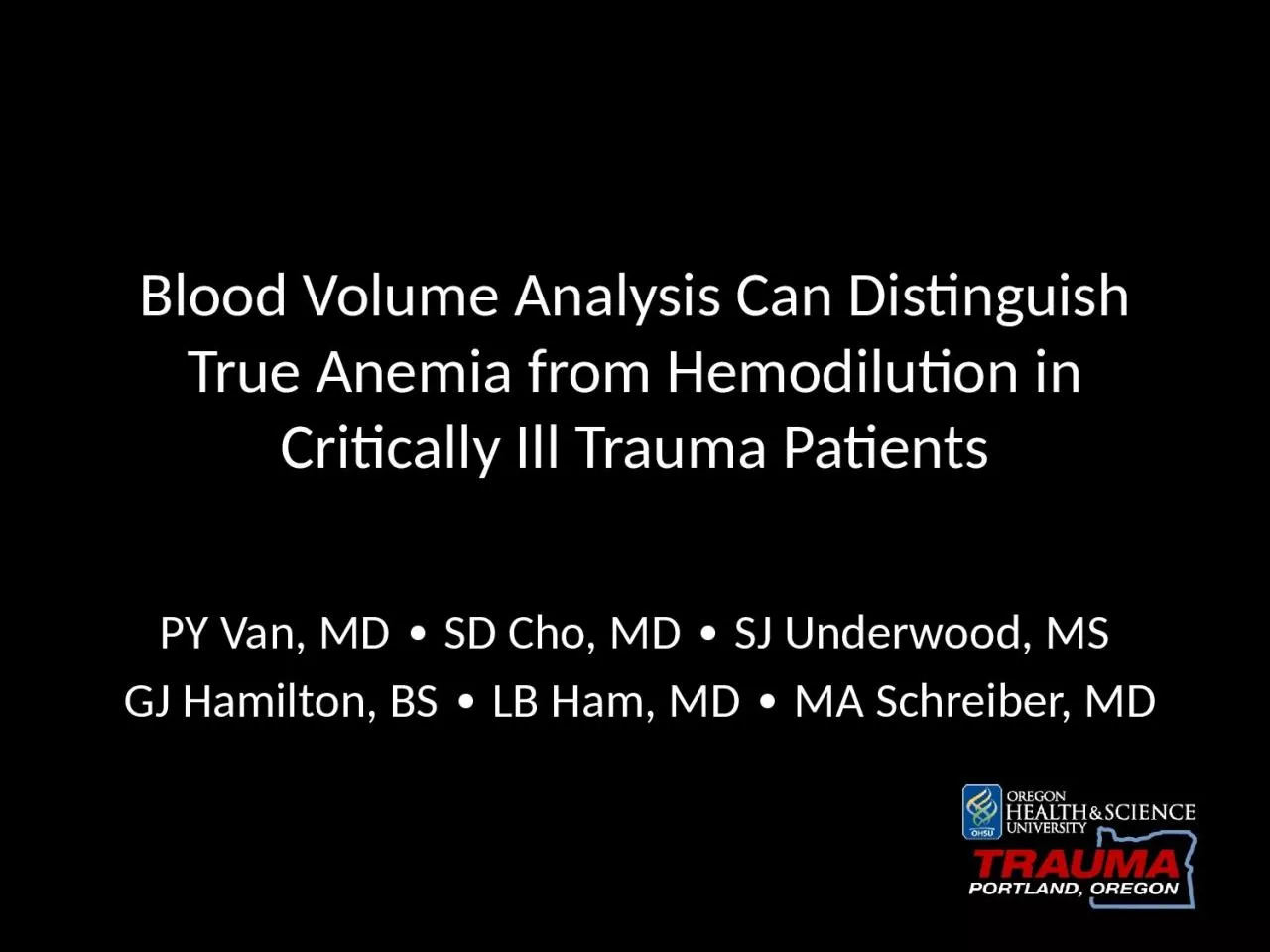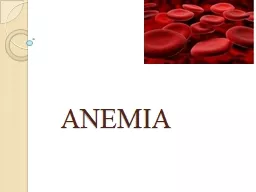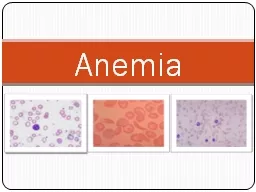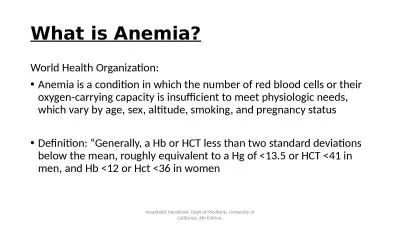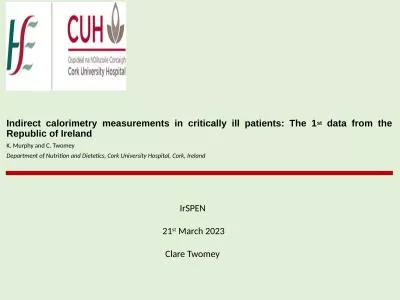PPT-Blood Volume Analysis Can Distinguish True Anemia from Hemodilution in Critically Ill
Author : jordyn | Published Date : 2022-06-28
PY Van MD SD Cho MD SJ Underwood MS GJ Hamilton BS LB Ham MD MA Schreiber MD Background Hemorrhage leading cause of preventable death in trauma victims Decreased
Presentation Embed Code
Download Presentation
Download Presentation The PPT/PDF document "Blood Volume Analysis Can Distinguish Tr..." is the property of its rightful owner. Permission is granted to download and print the materials on this website for personal, non-commercial use only, and to display it on your personal computer provided you do not modify the materials and that you retain all copyright notices contained in the materials. By downloading content from our website, you accept the terms of this agreement.
Blood Volume Analysis Can Distinguish True Anemia from Hemodilution in Critically Ill: Transcript
Download Rules Of Document
"Blood Volume Analysis Can Distinguish True Anemia from Hemodilution in Critically Ill"The content belongs to its owner. You may download and print it for personal use, without modification, and keep all copyright notices. By downloading, you agree to these terms.
Related Documents

